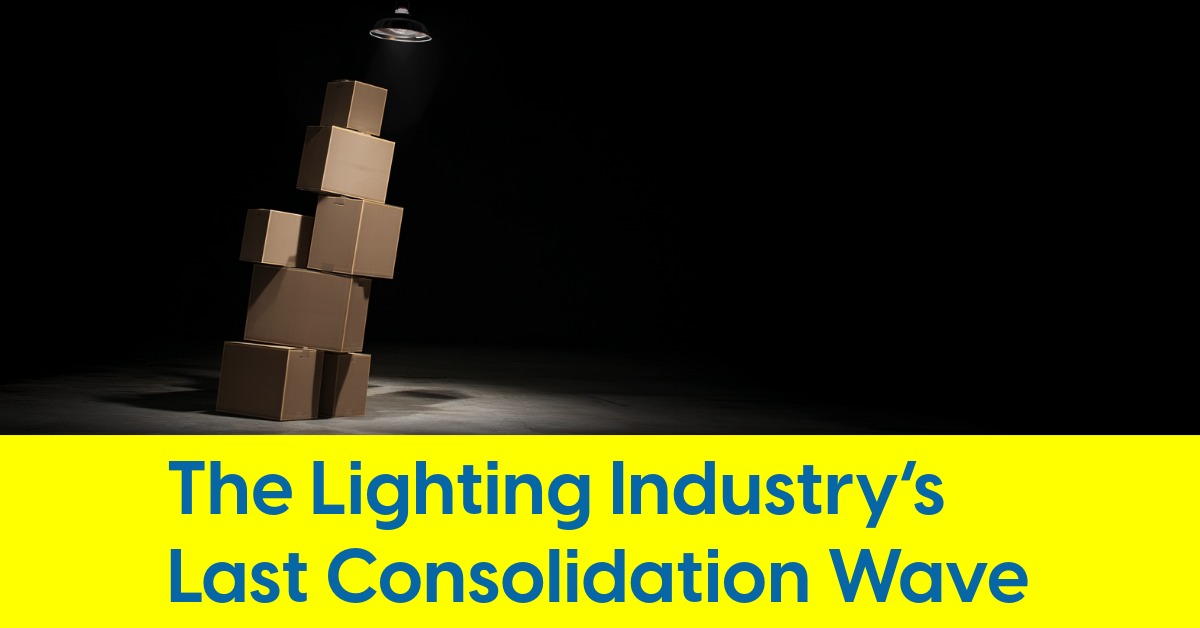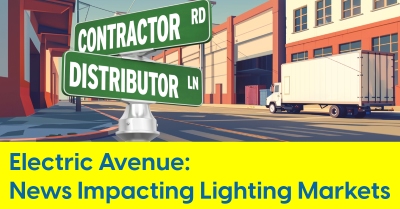October 28, 2025
A.I., Tariff Tensions & Strategic Moves Collide in Hong Kong

VIPs flock to Asia this week. Tarrifs, supply chain and innovation in focus.
This week’s HKTDC Hong Kong International Lighting Fair opened amid a swirl of global headlines that extend far beyond the exhibit hall. While the atmosphere on the show floor remains friendly toward American visitors the undercurrent is unmistakable: uncertainty in global trade relations continues to cloud long-term supply chain strategies.
The fair coincides with a high-stakes meeting in South Korea, where President Donald Trump and Chinese President Xi Jinping are expected to negotiate a limited agreement aimed at de-escalating tariffs. But this week’s diplomatic focus is centered less on the lighting industry’s needs — like LED chips and drivers — and more on rare earth minerals and soybeans.

Above: Overseas journalists at the Hong Kong International Lighting Fair
Photo credit: Peter Augusta, Casambi
Still, multiple exhibitors at the fair told Inside Lighting that even a modest breakthrough in the talks could stabilize relations and reduce tariff volatility. Some reported slowdowns in Chinese factory output this year, citing U.S. tariffs as the sole culprit.
Other exhibitors pointed to a steady shift of production lines to countries like Vietnam, Thailand, Malaysia, and Cambodia — moves accelerated by tariff unpredictability and concerns over long-term exposure to China-based manufacturing.
A CEO in Shanghai, as Headlines Follow His Company
Adding another layer to the moment: one of the lighting industry’s most influential executives is also in Asia this week.
As Tempelman, CEO of Signify, is conducting a town hall meeting with staff at the company’s Shanghai office, according to members of Signify’s OEM China team. His timing is significant — not just for internal morale following last week's challenging third quarter results, but for strategic visibility in the region. Signify, the Dutch lighting powerhouse with deep operations in China, is also an exhibitor at the Hong Kong fair, reinforcing its continued investment in the global OEM manufacturing base.
While Tempelman speaks to employees, Signify is also making headlines in China’s state-run media. A recent China Daily article spotlighted the company’s AI initiatives in Shanghai, including integration of generative AI into its lighting systems — a move the publication calls part of Shanghai’s broader ambition to be a global AI hub. For North American readers, it’s a reminder: Signify isn’t just adapting to China’s AI ecosystem — it’s helping build it.
From Smart Streets to Smarter Systems
According to China Daily, Signify has launched AI-driven products in China this year, including what it described as the first generative AI agent for lighting management. The tool, integrated into Signify’s Interact City Flex system, aims to help cities better control and optimize streetlight networks. The company is also preparing to unveil a new home lighting platform during the China International Import Expo in November, which reportedly blends AI with mood-based lighting features.
Liu Haitao, head of Research China at Signify, told China Daily that the company is embedding AI into both its product offerings and internal workflows. “The value of AI technology lies not only in the innovation itself,” Liu said, “but also in how it truly empowers employees and enhances organizational efficiency.”
To be clear, most of these AI-driven developments are being piloted and scaled in China first. But that doesn’t mean they’ll stay there. Signify has increasingly positioned its China-based R&D teams as global contributors to its platform strategy. In time, these technologies could shape offerings in the U.S. and Canadian markets — particularly in smart cities, building automation, and energy optimization.
Between Two Powers: North American Lighting Caught in the Middle
For lighting professionals in the U.S. and Canada, the week’s headlines from Asia are more than passing interest. They’re a preview of what’s to come — or what could soon arrive, depending on policy, market access, and adoption cycles.
Signify’s AI strategies unveiled in Shanghai, suggest that the next wave of innovation in the global lighting space may not emerge from North America — at least not first. Meanwhile, the ever-shifting tariff landscape means that even if the technology is available, getting finished goods from China into Western markets remains a logistical and financial risk.
There’s also a question of direction. Can North American lighting companies afford to invest heavily in AI when regulatory environments and procurement cycles remain cautious? Or must they do so, precisely because their Chinese and European counterparts already are?
As Signify showcases its offerings on the Hong Kong fair floor — while its CEO simultaneously meets with staff in Shanghai — the answer may be taking shape, thousands of miles from the customers it will ultimately affect.










